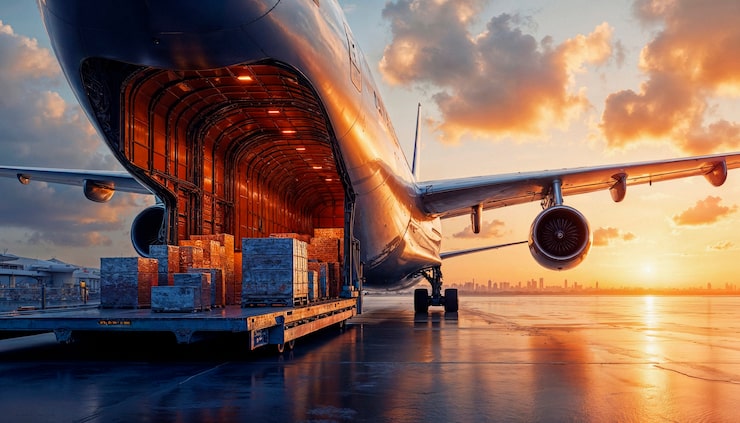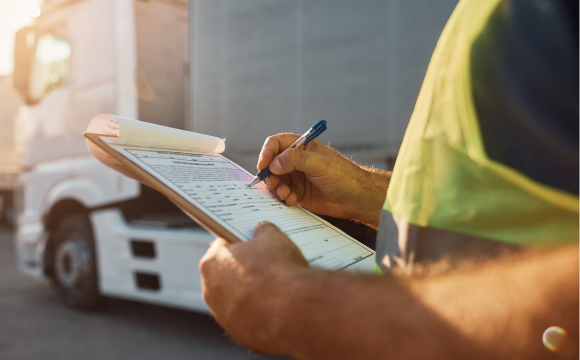- By TOP CHINA FREIGHT
- September 27, 2025
- Air Freight, Shipping
Table of Contents
Air freight rates from China to Europe are a critical consideration for businesses managing international supply chains. With evolving logistics trends and fluctuating market conditions, companies must understand pricing structures, transit times, and customs procedures to make informed shipping decisions. This guide provides detailed insights, strategies, and data to optimize your air cargo operations.

What factors influence air freight rates from China to Europe?
Air freight pricing is determined by multiple factors. Airlines calculate rates based on actual weight or volumetric weight, depending on which is higher. Additional costs include fuel surcharges, security fees, and handling charges for documentation and customs clearance. Seasonal demand, such as holiday periods or peak manufacturing months, can also significantly increase rates.
Cargo type further impacts pricing. High-value items, hazardous goods, and oversized shipments require special handling, which raises costs. Additionally, direct flights are typically faster but more expensive, while indirect routes may reduce the cost but lengthen transit time.
| Factor | Impact on Rates |
|---|---|
| Cargo weight/volume | Higher weight or bulkier shipments cost more |
| Flight availability | Direct flights are faster but costlier |
| Peak season demand | Rates surge during high-demand periods |
| Special cargo handling | Hazardous/valuable goods add surcharges |
| Fuel & security fees | Fixed airline charges affect total cost |
How much do air freight rates from China to Europe cost?

Typical air freight rates range between $4–$9 per kilogram, depending on service type, route, and season. Express air shipments tend to cost more but offer faster transit times.
| Cargo Type | Estimated Cost per KG | Transit Time |
|---|---|---|
| Standard Cargo | $4 – $6 | 5 – 8 days |
| Express Shipments | $6 – $9 | 3 – 5 days |
| Special Cargo | $7 – $12+ | 5 – 10 days |
Rates fluctuate due to fuel prices, airline capacity, and seasonal peaks. Bulk shipments or long-term contracts with freight forwarders can reduce costs.
Why choose air freight over sea or rail freight?
Air freight is the fastest shipping method. While sea freight from China to Europe can take 30–45 days, air freight delivers within a week. Rail freight offers a middle-ground solution, taking 15–22 days. Air freight is ideal for high-value, perishable, or time-sensitive goods.
Comparison of shipping methods:
| Method | Cost per KG | Transit Time | Best For |
|---|---|---|---|
| Air Freight | $4 – $9 | 5 – 8 days | Electronics, urgent goods |
| Sea Freight | $0.5 – $3 | 30 – 45 days | Bulk, low-value cargo |
| Rail Freight | $2 – $5 | 15 – 22 days | Mid-value goods to Europe |
Air freight ensures supply chain reliability, especially when avoiding stockouts or meeting strict delivery schedules.
What documents are required for air shipments to Europe?

Proper documentation is essential to avoid delays and penalties during customs clearance. Required documents include:
| Document | Purpose |
|---|---|
| Commercial Invoice | Declares value of goods |
| Packing List | Details cargo contents |
| Airway Bill | Contract of carriage |
| Import License (if needed) | Required for regulated goods |
| Certificate of Origin | Confirms product origin |
| Customs Declaration | Required for clearance |
Ensuring accuracy reduces the risk of customs delays, fines, and additional charges.
How long does air freight from China to Europe take?
Transit times vary by origin and destination. Direct flights from Chinese hubs like Shanghai, Guangzhou, or Shenzhen to European airports typically take 5–8 days. Transit can extend during peak season or customs inspections.
| Origin City | Destination Europe | Transit Time |
|---|---|---|
| Shanghai | Frankfurt | 5 – 7 days |
| Guangzhou | Paris | 6 – 8 days |
| Shenzhen | Amsterdam | 5 – 7 days |
| Beijing | London | 6 – 8 days |
Planning for potential delays ensures that supply chains remain uninterrupted.
What are the advantages and disadvantages of air freight?
Air freight is fast and reliable, but costs are higher than sea or rail. Businesses must weigh urgency against cost when selecting transportation modes.
| Pros | Cons |
|---|---|
| Fastest shipping method | Higher cost per kilogram |
| High reliability | Limited cargo capacity |
| Ideal for perishable goods | Environmental impact |
| Global connectivity | Restrictions on hazardous goods |
Air freight is particularly useful for businesses needing to maintain just-in-time inventory or meet urgent customer demand.
How can businesses reduce air freight costs from China to Europe?
Cost-saving strategies include shipment consolidation, booking in advance, and optimizing packaging to minimize volumetric weight. Choosing indirect routes can reduce cost slightly but may increase transit time. Working with freight forwarders ensures access to negotiated rates and avoids peak surcharges.
Cost optimization tips:
- Partner with reliable freight forwarders for volume discounts.
- Avoid peak season shipments to prevent high rates.
- Optimize packaging for maximum space efficiency.
- Combine air and sea freight for hybrid solutions.
Strategic planning can significantly reduce overall logistics costs while maintaining delivery efficiency.
Case Study: Optimizing air freight costs for a European retailer

A European retailer needed to import electronics from Shenzhen before the holiday season. Sea freight would have been too slow, while express courier services were expensive. By partnering with a freight forwarder, shipments were consolidated, reducing the per-kg cost from $8.50 to $5.50. Delivery was completed in six days, ensuring products arrived before peak demand. This example illustrates how strategic planning and forwarder partnerships reduce air freight rates while maintaining supply chain efficiency.
Should businesses hire a freight forwarder for European imports?
Freight forwarders simplify the shipping process, handling bookings, documentation, customs clearance, and delivery. They also provide access to better rates and offer insurance options. For small to medium-sized businesses, outsourcing logistics ensures compliance, efficiency, and cost savings.
Conclusion
Air freight rates from China to Europe fluctuate due to factors such as cargo type, weight, route, and season. While air freight is more expensive than sea or rail, its speed and reliability make it ideal for urgent and high-value goods. Businesses can optimize costs by working with freight forwarders, consolidating shipments, and planning strategically. By understanding pricing, transit times, and documentation requirements, companies can streamline logistics and maintain a competitive edge in Europe.
Need a Shipping Quote?
If you want expert guidance and peace of mind, our team is ready to assist.
TJ China Freight offers tailored solutions to help businesses of all sizes ship more reliably from China.

FAQ
Q1:What factors affect air freight rates from China to Europe?
Rates depend on weight, volume, cargo type, route, season, and airline surcharges.
Q2:Can I ship hazardous materials by air freight?
Yes, but airlines require special handling and additional documentation.
Q3:How long does standard air freight take to Europe?
Typically 5–8 days, depending on origin and customs processing.
Q4:Are customs duties included in air freight rates?
No, duties and VAT are usually billed separately.
Q5:Can I track my air freight shipment?
Yes, tracking is available via airway bill and freight forwarder platforms.
